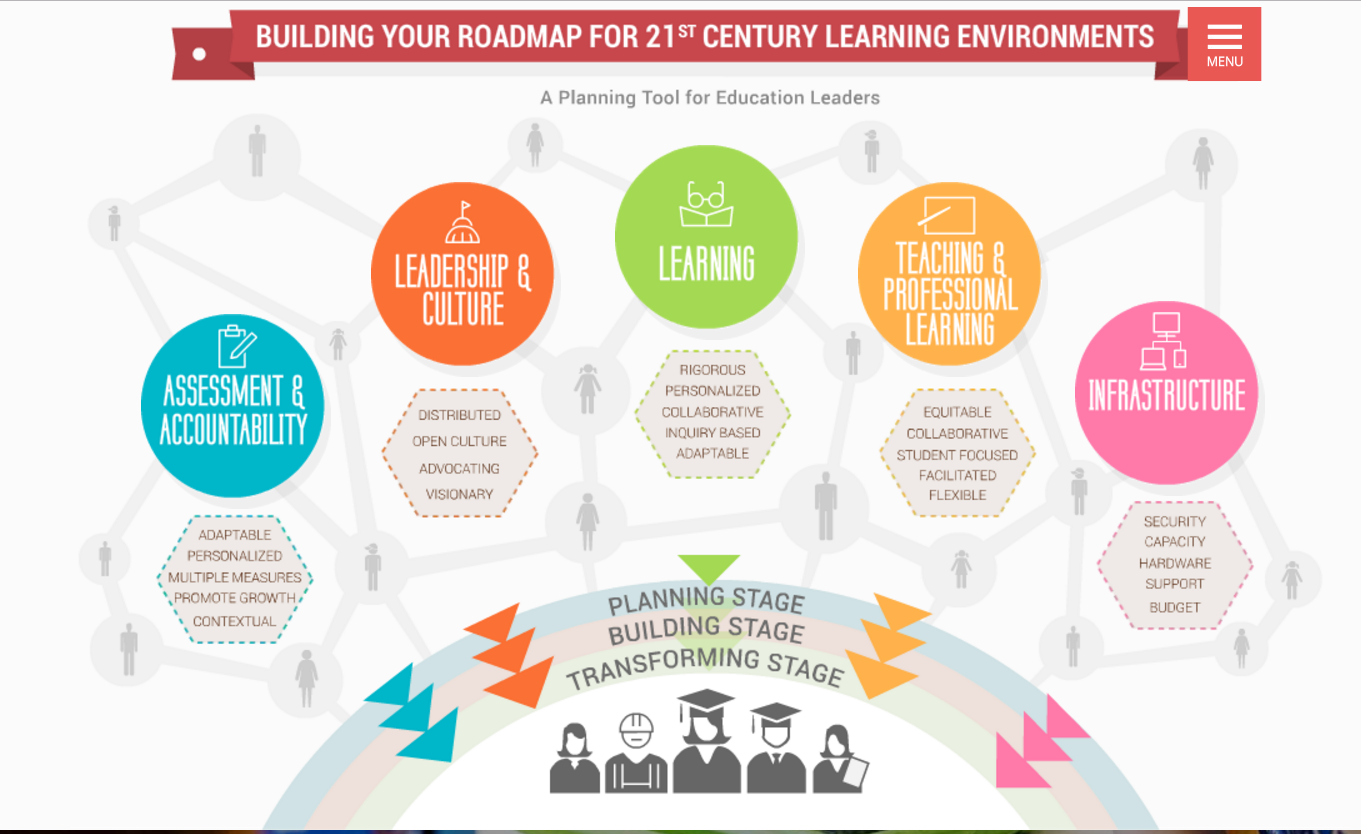
The Partnership for 21st Learning created a framework for educators that provides a “…unified vision for learning to ensure student success in a world where change is constant and learning never stops”.
There are key subjects areas that include English, reading or language arts, world languages, arts, mathematics, economics, science, geography, history, government and civics. In addition to and integrated with these are learning and innovation skills which are those skills that prepared students to be truly career and college ready. The skills are referred to as the 4C’s and are: Creativity & Innovation; Critical Thinking & Problem-Solving; Communication; and Collaboration.
To be prepa21st Century Learning(p21.org)red for today’s jobs and the jobs of the future, some of which have not yet been created, they must be flexible, creative, innovative and able to lead. Curriculum needs to include real world problem solving, including understanding and using technology to thrive in our digital and global world. Students in today’s schools are not prepared by sitting and listening to lectures, they learn more through experience, applying knowledge and solving real world problems, using technology and other resources.
As a Career and Technical Education (CTE) teacher most of my teaching career, I have had the opportunity to teach students real world skills that while engaging, they also incorporate learning standards from many subject areas, such as language arts and math. CTE students have the opportunity to try out different career fields and better plan for their futures. These opportunities are available to all students and with the help of career counselors they can find job shadowing, internship and employment experiences, allowing them to better understand what career they have an interest and passion for.
In CTE programs in Washington State, school districts are developing career pathways for students within their communities by using workforce data to build connections and relationships with local employers. Students benefit from these relationships, but they are not the only ones. Opportunities are open for teachers as well, strengthening and enhancing the curriculum and supporting integration of subject standards.
Coggle.it: https://coggle.it/diagram/WA7BPig_f-96KVA3
References:
21st Century Skills. (n.d.). Retrieved November 6, 2016, from http://www.k12.wa.us/CareerTechEd/Presentations/21stCenturySkillsWA-ACTE.pdf
Foltos, L. (2013). Peer coaching: Unlocking the power of collaboration. Corwin Press. Chapter 6
Framework for 21st Century Learning. (n.d.). Retrieved November 6, 2016, from http://www.p21.org/our-work/p21-framework
What is it that all educators can learn from the experiences of CTE teachers that would help prepare students for their future. And how can coaches use these ideas.
Thanks for sharing Shannon- I too was curious about communication and collaboration skills and how they strengthen the more technical “how to do” skills.
“Opportunities are open for teachers as well,” I’d love to investigate that further. Relationships with our community are so important.